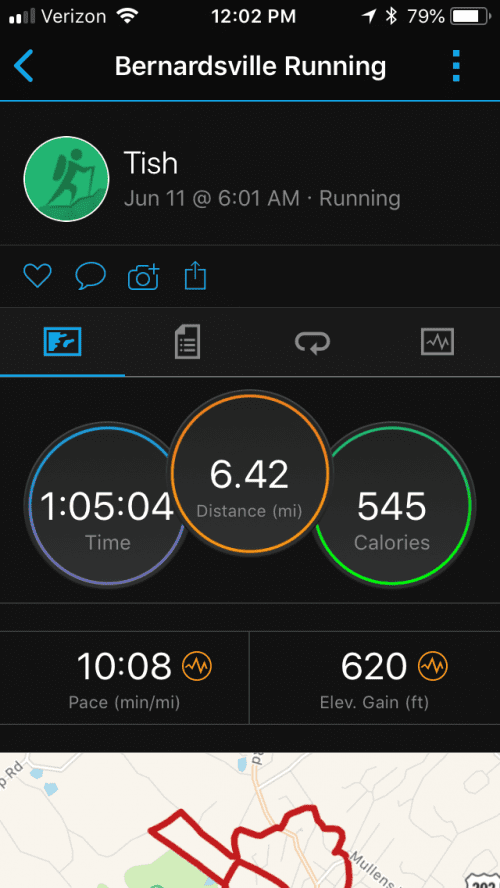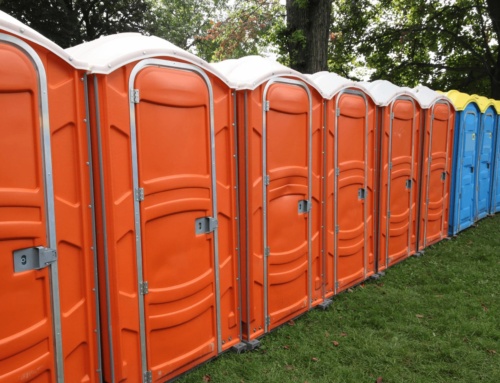True confession: I ran this morning so I’d have something to write in my training log.
Do you keep a training journal? Or some other kind of record of your running, cross-training (cough), foam-rolling (cough-cough)?
Probably you do: 81 percent of runners like to track all their running statistics, according to the 2017 National Running Survey put out by Running USA, and 63 percent do so with an app.
The allure is understandable: Garmin Connect, or Strava, or Trainingpeaks, or Whatever Else You Use does the work for you, tracking all the nifty details like mile splits, average heart rate, max run cadence, and calories burned.
Well, yeah.

I ran as hard as possible (on the downhills!) because I knew I was going to post this. And is why I DON’T “connect” on Garmin Connect! PS I don’t trust the “calories burned.” Future column!
My love affair with training journal has gone in a big circle.
When I trained for my first marathon back in the not-smartphone-lit Dark Ages, I scribbled the number of miles I ran every other day or so on a black-and-white Life In Hell wall calendar. Without irony. Oh, the irony.
I moved on to a spiral-bound Nathan Running Log, then the Complete Runner’s Day-by-Day Log and Calendar. They piled up. My triathlete husband persuaded me to use a revolutionary-in-the-1990s software called The Athlete’s Diary, which allows you to track mileage AND use a search function. Whee!
Well, you know how THAT story goes: The husband left, the computer seized. All gone. Poof!
In those post-divorce Dark Days, I ran more than ever but I quit taking notes. Looking back, I’m sorry I stopped, because as painful as those years were, I miss having records of the milestones (literal, figurative) along the way.
Old-school, hand-written, pen-to-paper notes are just so much more evocative than the cold hard facts that Garmin collects (though I like to look at those too!).
“Don’t all those old training journals pile up?” asked Fast Teacher Friend’s husband, N Bret.
Well, yeah.
But it’s fun to see the miles accumulate. And it’s a harmless self-indulgence to take a nostalgia trip through old logs and relive races long past. It’s amazing how a few words from many years ago can conjure a specific memory, as 1972 Olympian and old-log-book-collector Jeff Galloway has noted.
How you use a training journal (or your favorite app) is, of course, entirely up to you. Here are a few things to consider:
1. Choose Your Notebook
This is as personal as your running shoes or sports bra: Choose what works for you. Supermom Lauren Fleshman publishes a beautiful leather Believe Training Journal that offers space to write, reflect, set goals, along with tips and motivation. Bullet journals were all the rage a few minutes ago among the highly energetic. My eye needs both a monthly calendar and space for details, but I live in a tiny house, so I’ve settled on small yearly notebooks. July’s as good a time to start as any. Call it a Mid-year Resolution.

Lauren Fleshman’s leather-bound journal has pages of tips, exercises, workouts, goals, and comes with undated weekly pages, so you can start any time. Like now!
2. Pick Your Stats
What do you want to record in a training journal? Distance, time, and pace are obvious. Weather and route are optional. How the effort felt (and heart rate, if that’s your m.o.) can provide valuable feedback and trend-spotting. Cross-training, strength-training, foam-rolling, resting. Napping! (I wish!) Got a twinge in the right hamstring? Note that so you can track if it flares into full-blown injury or passes without further fuss. The masochistic might record their weight.
I make note of migraines, as fatigue and dehydration are both triggers. Organized and analytical folks note which shoes they ran in like a shoe-odometer; depending on a variety of factors, you need fresh kicks at the 350-500 mile mark. Do it for a while and you’ll learn what works for you (I never mastered the shoe-odometer).

My current choice: A little notebook with monthly calendars in front; weekly spreads for more words; and blank pages for race deets.
3. Record Race Deets
Sure, when (if) you run a race, the organizers will most likely provide online time, place, and maybe even mile splits. But there are countless other race-experience details you’ll be glad you noted if/when you ever return to the distance. The most useful notes I’ve reviewed include what I consumed the night before the race (carbs, protein, wine). What exactly I ate and drank before the race and when exactly all that happened. Poop success. All the boring mile-by-mile details that no one wants to hear but me.

Motivate like a pro: Inside @shalaneflanagan’s (wowza) training journal
4. Get Motivated
If you’re targeting an aggressive or specific goal, your journal is the best place to write it as self-motivation, as do countless high-profile elite runners such as Shalane Flanagan and Kara Goucher. There is all kinds of literature about intentional positive goal-setting. (Hello, Deena Kastor!) That said, be kind to yourself. If your training log reveals that you got in only two of your planned five long runs before your event, resist the temptation to beat up on yourself. Instead, use that knowledge to inform a goal consistent with your fitness.

Painting an IKEA bedside table because the books are piling up! (Shelf and door are still in progress.)
5. Enjoy the Journey!
Run for a few years, and everything will change. This week’s podcast had so much wisdom on how the definition of “joy” in running changes over the years. That’s especially true for mothers with small children. (The kids grow up!) Your time, priorities, fitness, and midsection shift. All good. In the moment, keeping a training journal can provide five minutes to pause and consider what you did with your day. In hindsight, a training journal provides a window on how you live your life. Like your teenage diaries without the wince-inducing boy craziness. You don’t do THAT with Garmin Connect.
Yeah, hard-bound, pen-to-paper training logs pile up. Consider them badges of accomplishment.







Excellent post, and very timely, as I just cracked open my second Lauren Fleshman journal today! I also track on Garmin/Strava, but the pen and paper just adds a lot.
I have used Laura Fleishman’s Believe journals for the last three years. Right now I have the Compete one. I love how they each have different focuses and each month require you to take the tone to look back at how the month has gone. I use Garmin Connect and Strava but nothing beats the pen and paper connection.
I used the Believe Journal for two years but I would get behind. I built an Excel File that tracks my daily/monthly/yearly mileage and I have tabs with other details i.e. race times and some mile splits. I follow plans religiously and continuously so I do have a binder where I keep the Word Calendars I print out with all my workouts. I do have a Garmin and Garmin connect I can go back and check out my pace, splits, hills, etc if needed.
I have kept a diary since about 4th grade- still have those. And still have my first Jim Fixx running journal from the early/mid 70s. Now I keep track in a planner and add up swim, bike and run and yoga/weights each month. Love to see the grand total at the end of the year!
Yes, I too am a pen and paper gal. It is so motivating to go back and reread race recaps and training highs when I am just not feeling it currently.
I think I need to improve my running log. I just write down how far I went on a calendar. I also use Strava and might make a note or two. I like these journals made specifically for logging. Here is my recent post on my running log: https://tararunstheworld.blog/2018/06/11/running-log-rundown/
I’ve saved 23 running logs from 1984 to 2016. They’re brimming with anecdotes and hand written pep talks, as well as, newspaper clippings and race ribbons. Runkeeper and Strava are great and I use them regularly, but I’m partial to the hard copy runners logs.